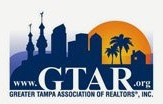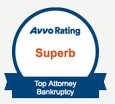Bankruptcy And Wells Fargo
Bankruptcy And Wells Fargo, A Bad Mix
Each night, as we sleep, Wells Fargo combs the Federal electronic database of all new bankruptcy filings from the day before. When the bank finds that its customer has filed Chapter 7 bankruptcy, Wells Fargo will note the client as being in “bankruptcy status” and freeze the clients checking and savings accounts, thus denying the depositor access to his money. The bank then notifies its client and the Chapter 7 Trustee, and awaits direction from the Trustee to release the hold on the account(s).
Most bankruptcy attorneys will be tempted to immediately file for a violation of the automatic stay imposed by §362(a) of the Bankruptcy Code, specifically subsection (a)(3) which prohibits “any act to obtain possession of property of the estate or to exercise control over property of the estate.” Logic would provide that freezing a bank account is “exercising control” over that account.
The apparent authority for Wells Fargo to do this comes from a United State Supreme Court Case, Citizens Bank of Maryland v. Strumpf, 516 U.S. 16 (1995). In that case, the Supreme Court ruled that a deposit account is “nothing more or less than a promise to pay, from the bank to the depositor” and the bank’s “temporary refusal to pay was neither a taking of possession of … property nor an exercising of control over it, but merely a refusal to perform its promise.” Accordingly, the Court ruled that the freeze was allowed and did not sanction the bank for its conduct.
The Strumpf case involved the bank’s right to “set-off” funds – taking funds from a checking or savings account held at the bank to pay for a debt owed to that bank. Unfortunately, The Middle District of Florida has also adopted this interpretation in cases where the debtor merely has a bank account at the deposit institution, even when there is no corresponding debt that triggers a right to set-off. The Middle District covers residents of Pasco, Polk, Hillsborough, Pinellas, Manatee, Sarasota, and other counties in and around Jacksonville, Ocala, Orlando, Fort Myers, and Naples, Florida. In the case In re Young, 2010 WL 3965698 (Bankr. M.D. Fla. 2010), the Court quoted the language in the Strumpf case and ruled there was no violation of the automatic stay. The bankruptcy courts in New Mexico and Texas also adopt this view.
In contrast, the Bankruptcy Appellate Panel for the Ninth Circuit (which covers Alaska, Arizona, California, Guam, Hawaii, Idaho, Montana, Nevada, Oregon and Washington State), in the case Mwangi v. Wells Fargo Bank, N.A., 432 B.R. 812 (B.A.P. 9th Cir. 2010), stated: “Wells Fargo could have paid the account funds to the trustee; it did not. Wells Fargo could have released the account funds claimed exempt … when demand was made; it did not. Wells Fargo could have sought direction from the bankruptcy court …; it did not. Instead, it chose to hold the funds until a demand was made for payment that it alone deemed appropriate. If that is not “exercising control over” the funds, we don’t know what is.”
Unless or until these conflicting views are appealed to the U.S. Supreme Court, Wells Fargo banking customers who live in the Tampa Bay Area and other areas comprising the Middle District of Florida will have to do some pre-bankruptcy planning. The most logical strategy is to move the money from a Wells Fargo bank account to another bank (as of the writing of this article, Wells Fargo is the only bank that imposes this account hold.) Another possible strategy is to remove sufficient case funds to cover regular expenses until such time as the Chapter 7 Trustee has an opportunity to review the schedules and send notice to Wells Fargo that the hold can be removed. Although this process normally takes a few days, it could take up to 30 days or more. Both of these strategies will have an impact on a debtor’s bankruptcy petition and must be disclosed within the schedules. Thus having experienced legal counsel is a necessity when making a determination whether bankruptcy is the best option.
… or we could try to get Wells Fargo to change their policies …
– Shawn M. Yesner, Esq.
For more information on bankruptcy issues, to schedule a free initial consultation to discuss your options, or to discuss issues regarding Wells Fargo deposit accounts, please contact our firm at: 727-261-0224 or email me at: shawn@yesnerlaw.com.
Shawn M. Yesner, Esq., is the founder of Yesner Law, P.L., a Tampa-based boutique real estate law firm that helps client navigate the Bankruptcy Code, providing our clients with a fresh start and relief from debt. We assist clients with bankruptcy Chapter 7 and Chapter 13, short sales, loan modifications, foreclosure defense, and debt settlement, for clients in Tampa, Westchase, Carrolwood, St. Petersburg, St. Petersburg Beach, Treasure Island, Medeira Beach, Reddington Beach, Kenneth City, Gulfport, Seminole, Clearwater, Clearwater Beach, Oldsmar, Dunedin, Safety Harbor, Palm Harbor, Lutz, New Port Richey, Trinity, Port Richey, and other areas that comprise the greater Tampa Bay area.









